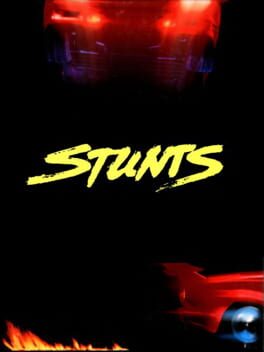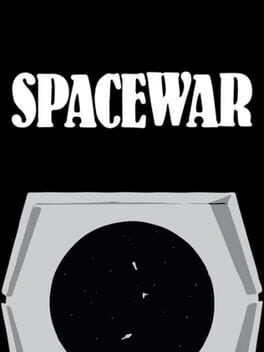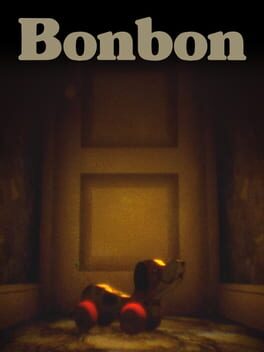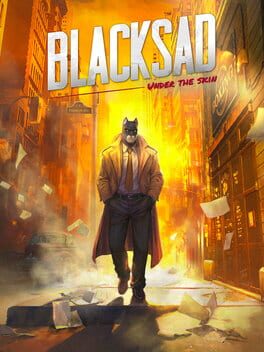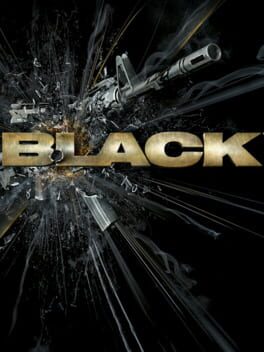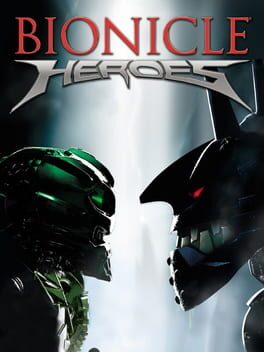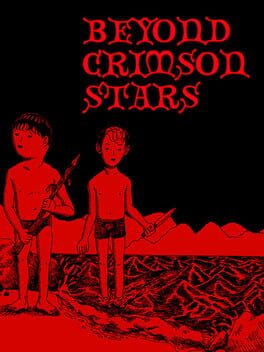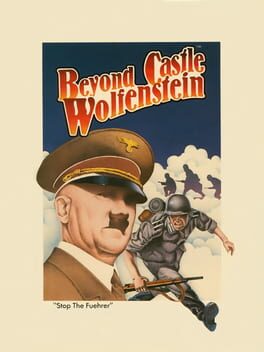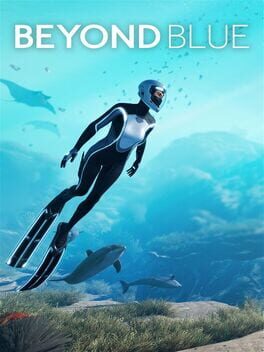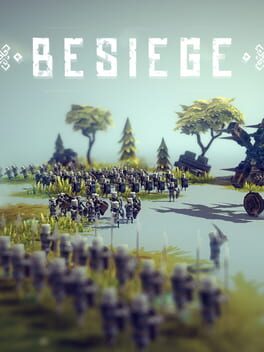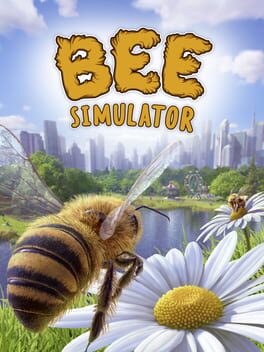Abbastanza diverso rispetto al primo capitolo, già solo perché sono stati realizzati più ambienti da esplorare e il gioco si divide in singole missioni (ciascuna della durata di una ventina di minuti circa). Non si può però pensare che sia più lineare del primo, che invece tentava di nascondertelo. Invece, in Luigi's Mansion, di missione in missione ci si trova spesso a esplorare stanze già visitate in precedenza ma che hanno qualcosa di nuovo: un collezionabile, altri fantasmi, o cambiate radicalmente per via di qualche agente atmosferico o infestazione. Altro motivo per cui la struttura a missioni si presta meglio questa volta è la console adottata, il 3DS, da cui puoi staccarti alla conclusione di una missione (c'è solo l'autosalvataggio) per procedere dopo, magari, qualche ora o qualche giorno
Bello il modo in cui si progredisce costantemente: il giocatore non deve far niente se non collezionare monete, che vengono automaticamente spese a fine livello per aumentare determinati parametri quattro-cinque volte. In questo senso ho trovato anche gratificante il sistema di cattura, nella sua semplicità: mi sono reso conto di poter scegliere di saltare durante la cattura (per evitare attacchi da parte di altri fantasmi) solo a un terzo del gioco, ed è effettivamente utile in senso strategico. Gli strumenti in propria dotazione di fatto non cambiano mai, ma cambiano i fantasmi da affrontare e in quel caso la sfida è sempre a un livello sufficiente da non essere davvero impegnativo ma che lascia comunque la possibilità di scegliere come affrontare una certa stanza: se occuparsi prima di un certo tipo di fantasma invece che un altro, e la loro quantità numerica è sempre tale che da giocatore non mi sono mai sentito soverchiato e frustrato. Magari fa eccezione giusto l'ultima missione
Mi piace pensare a questi giochi, Dark Moon in particolare, nei termini della filosofia di game design propria dei collect-a-thon; certamente non rientra nel sottogenere, in primo luogo perché non si tratta di un platformer. A farmelo percepire sono due cose: la quantità e diversificazione di oggetti da collezionare in ogni missione (gemme, ossa, fantasmi); il valore che viene dato all'esplorazione (del resto a capo della direzione e della supervisione c'era anche Miyamoto) sia nel trovare gli oggetti da collezionare che nel risolvere di volta in volta un certo puzzle. Puzzle, che ovviamente, non sono mai astratti e sono ben giustificati dall'ambiente in cui ci si trova (che si tratti di una grotta, di una sala da pranzo, di un laboratorio) e che sono spesso sviluppati a partire dalla voglia di sorprendere il giocatore. In questo senso, è come se molte volte ci si trovasse a girare le manopole di quei giocattoli fatti di ingranaggi e bambole di pezza, e a questo pensiero collego in modo diretto l'arma usata da Luigi; fondamentale per ogni interazione e azione, consente la risoluzione di enigmi, la cattura di fantasmi e, soprattutto, l'attivazione di meccanismi: è quasi come trovarsi all'interno di una casa delle bambole infestata
Collezionare e trovare i Boo oltre a essere, poi, gratificante di per sé permette di accedere a missioni segrete
Questa saga di Luigi, poi, mi fa pensare a come lo stile comico che lo contraddistingue potrebbe essere anche spiegato e raccontato partendo dalla commedia manzai giapponese (che, nel caso dei personaggi in questione, è anche pressoché mimica - specie in Dark Moon, in cui non c'è nessuna visualizzazione dei pensieri di Luigi come nel primo gioco); prevede due tipi di personaggi, uno coraggioso (o, nel caso della mia interpretazione, eroico come lo è Mario) e un'altro buffo e timoroso (come lo è a tutti gli effetti in questo
caso Luigi). Non credo si possa negare che il personaggio di Luigi, alla fine, sia in realtà anche coraggioso, vista la quantità di merda che si trova a completare ogni volta senza lasciare che ciò lo pietrifichi o faccia desistere; tuttavia, è anche innegabile come sia stato concepito con espressioni facciali e gestuali molto enfatizzate, esagerate, volte a comunicare tutte le emozioni provate dal personaggio (probabilmente, tra l'altro, prima volta che un personaggio Nintendo abbia comunicato così tanto il proprio mondo interiore al giocatore). Il mio è comunque un pensiero abbastanza di superficie, dato che la commedia manzai da anche un grande ruolo all'interazione tra i protagonisti
Ci tengo qui a mandare a fare in culo Miyamoto per essersene uscito con l'idea di merda di fare un boss-scala
Bello il modo in cui si progredisce costantemente: il giocatore non deve far niente se non collezionare monete, che vengono automaticamente spese a fine livello per aumentare determinati parametri quattro-cinque volte. In questo senso ho trovato anche gratificante il sistema di cattura, nella sua semplicità: mi sono reso conto di poter scegliere di saltare durante la cattura (per evitare attacchi da parte di altri fantasmi) solo a un terzo del gioco, ed è effettivamente utile in senso strategico. Gli strumenti in propria dotazione di fatto non cambiano mai, ma cambiano i fantasmi da affrontare e in quel caso la sfida è sempre a un livello sufficiente da non essere davvero impegnativo ma che lascia comunque la possibilità di scegliere come affrontare una certa stanza: se occuparsi prima di un certo tipo di fantasma invece che un altro, e la loro quantità numerica è sempre tale che da giocatore non mi sono mai sentito soverchiato e frustrato. Magari fa eccezione giusto l'ultima missione
Mi piace pensare a questi giochi, Dark Moon in particolare, nei termini della filosofia di game design propria dei collect-a-thon; certamente non rientra nel sottogenere, in primo luogo perché non si tratta di un platformer. A farmelo percepire sono due cose: la quantità e diversificazione di oggetti da collezionare in ogni missione (gemme, ossa, fantasmi); il valore che viene dato all'esplorazione (del resto a capo della direzione e della supervisione c'era anche Miyamoto) sia nel trovare gli oggetti da collezionare che nel risolvere di volta in volta un certo puzzle. Puzzle, che ovviamente, non sono mai astratti e sono ben giustificati dall'ambiente in cui ci si trova (che si tratti di una grotta, di una sala da pranzo, di un laboratorio) e che sono spesso sviluppati a partire dalla voglia di sorprendere il giocatore. In questo senso, è come se molte volte ci si trovasse a girare le manopole di quei giocattoli fatti di ingranaggi e bambole di pezza, e a questo pensiero collego in modo diretto l'arma usata da Luigi; fondamentale per ogni interazione e azione, consente la risoluzione di enigmi, la cattura di fantasmi e, soprattutto, l'attivazione di meccanismi: è quasi come trovarsi all'interno di una casa delle bambole infestata
Collezionare e trovare i Boo oltre a essere, poi, gratificante di per sé permette di accedere a missioni segrete
Questa saga di Luigi, poi, mi fa pensare a come lo stile comico che lo contraddistingue potrebbe essere anche spiegato e raccontato partendo dalla commedia manzai giapponese (che, nel caso dei personaggi in questione, è anche pressoché mimica - specie in Dark Moon, in cui non c'è nessuna visualizzazione dei pensieri di Luigi come nel primo gioco); prevede due tipi di personaggi, uno coraggioso (o, nel caso della mia interpretazione, eroico come lo è Mario) e un'altro buffo e timoroso (come lo è a tutti gli effetti in questo
caso Luigi). Non credo si possa negare che il personaggio di Luigi, alla fine, sia in realtà anche coraggioso, vista la quantità di merda che si trova a completare ogni volta senza lasciare che ciò lo pietrifichi o faccia desistere; tuttavia, è anche innegabile come sia stato concepito con espressioni facciali e gestuali molto enfatizzate, esagerate, volte a comunicare tutte le emozioni provate dal personaggio (probabilmente, tra l'altro, prima volta che un personaggio Nintendo abbia comunicato così tanto il proprio mondo interiore al giocatore). Il mio è comunque un pensiero abbastanza di superficie, dato che la commedia manzai da anche un grande ruolo all'interazione tra i protagonisti
Ci tengo qui a mandare a fare in culo Miyamoto per essersene uscito con l'idea di merda di fare un boss-scala
1990
Also known as 4D Sports Driving (outside of US), It is a car racing game counting 11 drivable cars and inspired by Hard Drivin' (1989). As the name suggests, the game is about doing outstanding jumps: focusing on dynamism and on the possibility of running on tracks that are raised above ground level, the player can speed past, break street signals and also enjoy the view from multiple angles through the recording made by some virtual cameras: in fact, it is even possible to watch the replay of a race that has lasted a maximum of approximately 10 minutes.
Also, impressive implementation of a really good track editor, which enriches the gaming experience and keeps you glued in a never contrived way.
Before a race, you obviously need to choose your vehicle: the small (and yet significant) assortment is presented through animated 3D models placed on a pedestal, which are accompanied by descriptive boxes showing the characteristics of the specific vehicle, and a graph displaying speed and acceleration.
Quite simply, four-wheel drive vehicles and particularly fast cars are made available: without going into detail, each obviously has its own advantages depending on the track chosen. Regardless of the viewing angle adopted, the steering wheel is always in the foreground, showing the speed of the vehicle at that specific moment and in which position the player is controlling the steering wheel (you are visually guided by a colored dot) and a representation of the gearbox (momentarily, when it is used by the player; you should also note that there's the option to drive with an automatic or a manual gearbox).
The race tracks are all well made and truly complex, with tunnels, slaloms, ramps, and corkscrews.
At the end of a race, a box informs the player about his performance: time taken to complete the race track, average speed of the vehicle, peak speed reached on the circuit and the total number of jumps performed.
The game gives back, therefore, a certain sense of realism that, granting a good control by the player (e.g.: knowing in real time the position of the steering wheel, and therefore of the wheels, could be a significant information for an MS-DOS user), matches well with a frenzy that precedes by far games that will arrive only in the following decades.
At the same time, unfortunately, you won't really be able to test yourself in the single-player mode, since the opponent's AI is half-assed.
However, It has never been a real problem for the players: in fact, Stunts has such an enamored fanbase that championships are still held regularly.
Also, impressive implementation of a really good track editor, which enriches the gaming experience and keeps you glued in a never contrived way.
Before a race, you obviously need to choose your vehicle: the small (and yet significant) assortment is presented through animated 3D models placed on a pedestal, which are accompanied by descriptive boxes showing the characteristics of the specific vehicle, and a graph displaying speed and acceleration.
Quite simply, four-wheel drive vehicles and particularly fast cars are made available: without going into detail, each obviously has its own advantages depending on the track chosen. Regardless of the viewing angle adopted, the steering wheel is always in the foreground, showing the speed of the vehicle at that specific moment and in which position the player is controlling the steering wheel (you are visually guided by a colored dot) and a representation of the gearbox (momentarily, when it is used by the player; you should also note that there's the option to drive with an automatic or a manual gearbox).
The race tracks are all well made and truly complex, with tunnels, slaloms, ramps, and corkscrews.
At the end of a race, a box informs the player about his performance: time taken to complete the race track, average speed of the vehicle, peak speed reached on the circuit and the total number of jumps performed.
The game gives back, therefore, a certain sense of realism that, granting a good control by the player (e.g.: knowing in real time the position of the steering wheel, and therefore of the wheels, could be a significant information for an MS-DOS user), matches well with a frenzy that precedes by far games that will arrive only in the following decades.
At the same time, unfortunately, you won't really be able to test yourself in the single-player mode, since the opponent's AI is half-assed.
However, It has never been a real problem for the players: in fact, Stunts has such an enamored fanbase that championships are still held regularly.
1962
One of the earliest video games, I like it mainly because of my fascination derived from what I read and watched regarding its development. Honestly, considering the year of its release I cannot help but feel a deep sense of wonder also on the gameplay side.
On one hand, it's just a game where two players pilot two ships that can be easily destroyed by a single well aimed shot (or colliding with the celestial body in the center of the screen). Well, I don't give a shit.
Being a big fan of Sci-Fi novels, Steve Russell decided that the PDP-1 would be the perfect machine to make a combination of a Sci-Fi B-movie and a $120000 toy in which two people could face off in an lethal space duel.
Spacewar! was a revolutionary game in many ways, starting from the simulation of a gravitational field that constantly attracts the two players towards the center and that forces you to plan and adopt strategies in anticipation of the actions that the opponent will implement because of gravity as an uncontrollable external variable. Simple yet wonderful the star map that serves as a background (made by Peter Samson, who wrote a program based on real star charts - Expensive Planetarium) and whose stars serve as spacemarks for the player; ingenious the implementation of certain mechanics, such as the wraparound, a limited amount of fuel and ammos (31 in total) or the provision of a cooldown system (so that players could not abuse too much of their weapons).
I want to pay particular attention to the hyperspace mechanic, which allows a player in trouble to avoid an enemy assault by rematerializing in a random point on the screen (yes, there's a chance that you could materialize on the celestial body): interesting also the fact that sometimes it may not activate at all and that it is better not to abuse it since an excessive use increases the probability that your ship will self-destruct. Fascinating that they were able to create an animation that mimicked a spatiotemporal distortion, so that when the ship jumped it left behind what was called a Minskytron signature (in reference to Marvin Minsky's Three Position Display).
In addition, this is also the first game for which a gamepad (albeit rudimentary, since it was more like a wooden control box) had been created.
The icing on the cake is the fact that the game was what we would now call open source: It was never patented since Russell and colleagues wanted to leave it up to anyone to edit or rewrite It as they saw fit.
On one hand, it's just a game where two players pilot two ships that can be easily destroyed by a single well aimed shot (or colliding with the celestial body in the center of the screen). Well, I don't give a shit.
Being a big fan of Sci-Fi novels, Steve Russell decided that the PDP-1 would be the perfect machine to make a combination of a Sci-Fi B-movie and a $120000 toy in which two people could face off in an lethal space duel.
Spacewar! was a revolutionary game in many ways, starting from the simulation of a gravitational field that constantly attracts the two players towards the center and that forces you to plan and adopt strategies in anticipation of the actions that the opponent will implement because of gravity as an uncontrollable external variable. Simple yet wonderful the star map that serves as a background (made by Peter Samson, who wrote a program based on real star charts - Expensive Planetarium) and whose stars serve as spacemarks for the player; ingenious the implementation of certain mechanics, such as the wraparound, a limited amount of fuel and ammos (31 in total) or the provision of a cooldown system (so that players could not abuse too much of their weapons).
I want to pay particular attention to the hyperspace mechanic, which allows a player in trouble to avoid an enemy assault by rematerializing in a random point on the screen (yes, there's a chance that you could materialize on the celestial body): interesting also the fact that sometimes it may not activate at all and that it is better not to abuse it since an excessive use increases the probability that your ship will self-destruct. Fascinating that they were able to create an animation that mimicked a spatiotemporal distortion, so that when the ship jumped it left behind what was called a Minskytron signature (in reference to Marvin Minsky's Three Position Display).
In addition, this is also the first game for which a gamepad (albeit rudimentary, since it was more like a wooden control box) had been created.
The icing on the cake is the fact that the game was what we would now call open source: It was never patented since Russell and colleagues wanted to leave it up to anyone to edit or rewrite It as they saw fit.
2015
Undertale è molto interessante, e sono molti i suoi aspetti di cui è possibile parlare approfonditamente. Dal combat system all'art direction, dalla profondità dei personaggi al tipo di comicità adottato, dalla metanarrativa molto intelligente all'uso delle tracce musicali. Forse, l'aspetto per me più interessante da discutere è quello del pacifismo
Uno di quei casi che possono fare da esempio quando si prova a parlare di ciò che uno sviluppatore indipendente è in grado di fare (quasi) da solo; l'altro caso è ConcernedApe
Si tratta sicuramente di uno dei giochi d'elezione quando si vuole parlare della gratificazione della violenza nel panorama videoludico e di dissonanza ludo-narrativa, specie quando si parla di opere pensate per un ampio e allo stesso tempo specifico target. Undertale riesce ad avere un successo e una notevole rilevanza culturale, in più paesi, nonostante remi esattamente in senso opposto rispetto quel che fanno altri giochi a esso precedenti e contemporanei - facendo le giuste eccezioni, come Moon di Love-de-Lic (una delle basi su cui si fonda Undertale stesso)
Uno di quei casi che possono fare da esempio quando si prova a parlare di ciò che uno sviluppatore indipendente è in grado di fare (quasi) da solo; l'altro caso è ConcernedApe
Si tratta sicuramente di uno dei giochi d'elezione quando si vuole parlare della gratificazione della violenza nel panorama videoludico e di dissonanza ludo-narrativa, specie quando si parla di opere pensate per un ampio e allo stesso tempo specifico target. Undertale riesce ad avere un successo e una notevole rilevanza culturale, in più paesi, nonostante remi esattamente in senso opposto rispetto quel che fanno altri giochi a esso precedenti e contemporanei - facendo le giuste eccezioni, come Moon di Love-de-Lic (una delle basi su cui si fonda Undertale stesso)
2017
2019
2015
2006
2006
2020
2020
2020
2019

